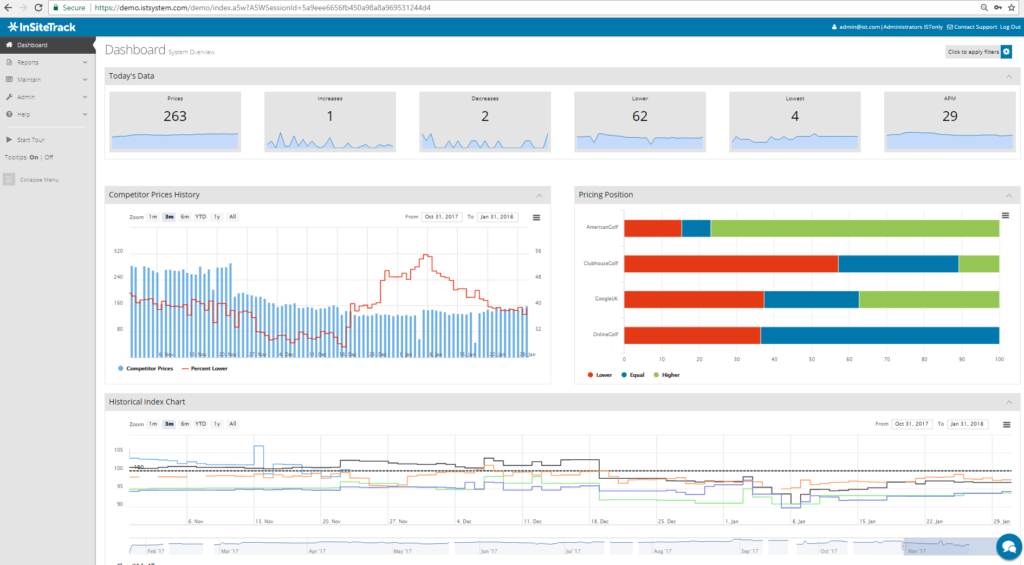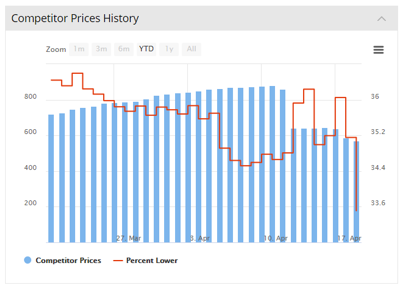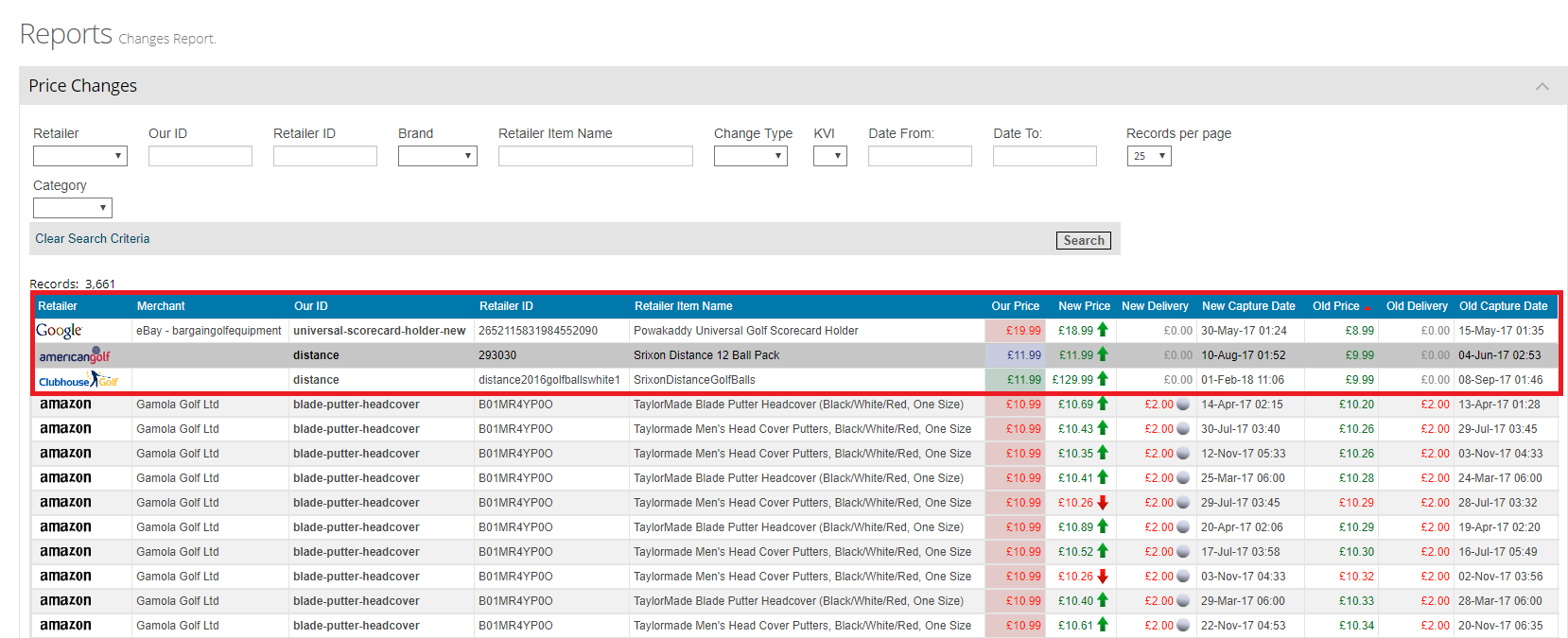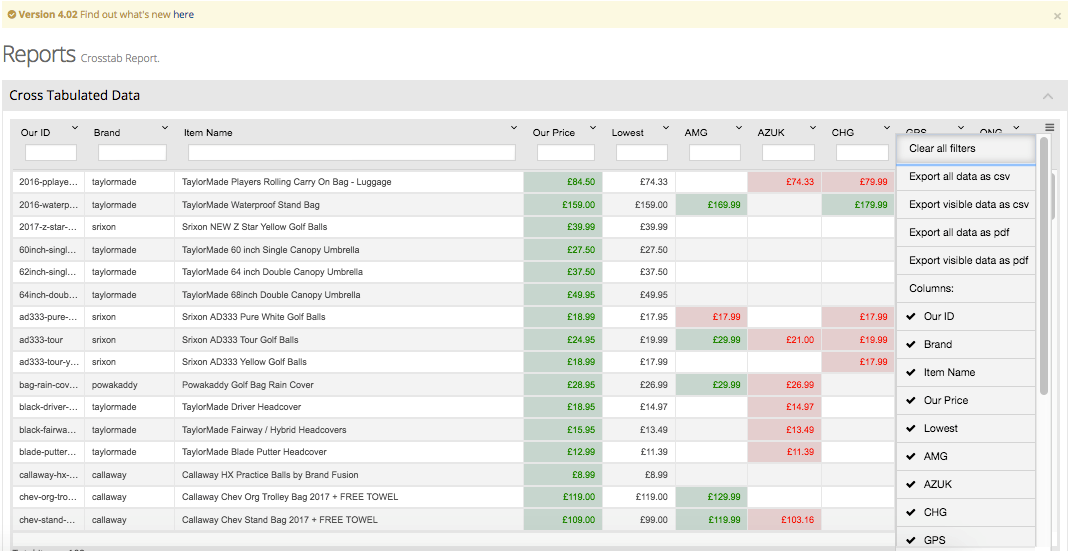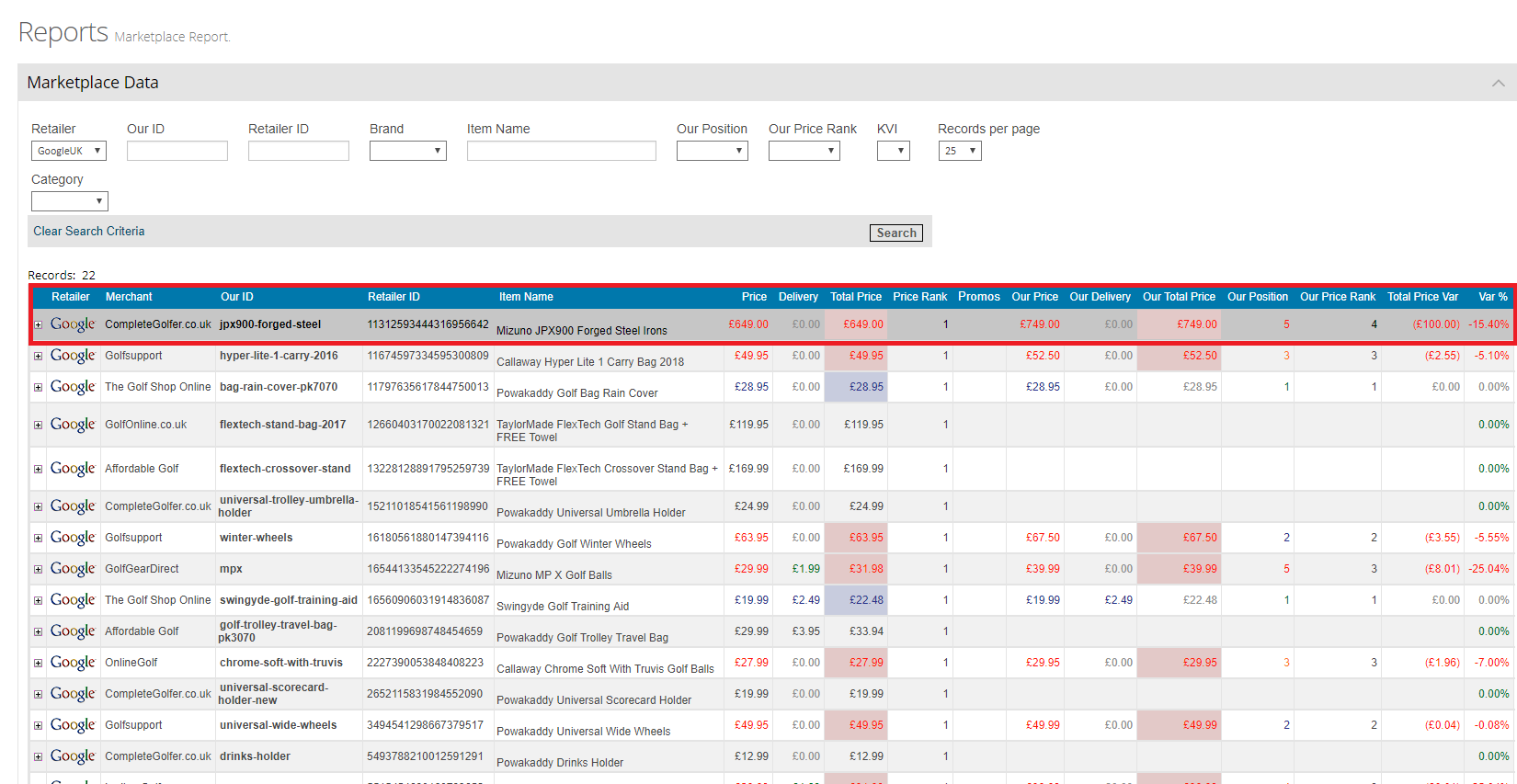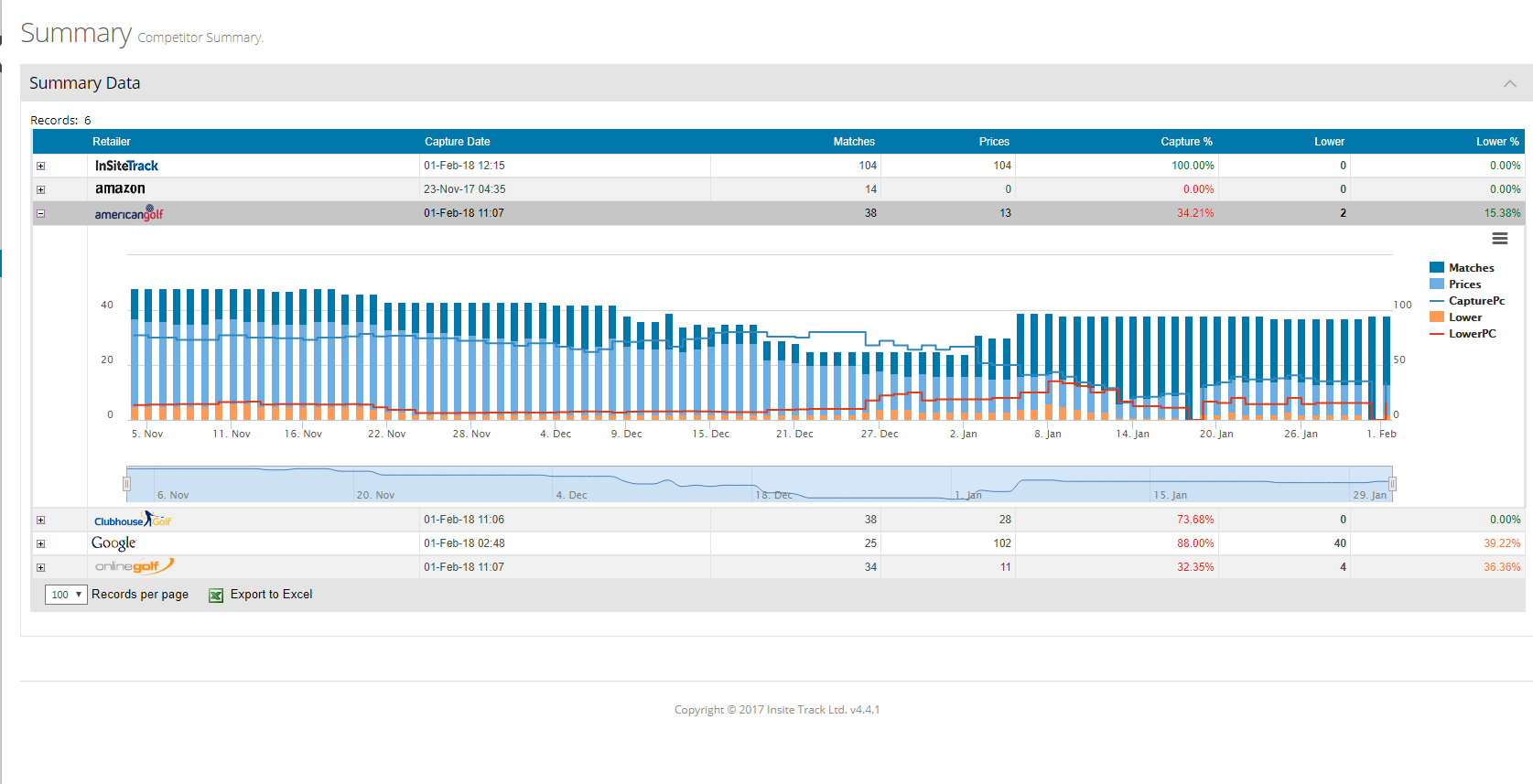
Price Intelligence
Definition, Process, and Best Practices
Smarter pricing starts with accurate and reliable insight.
Price intelligence means collecting, checking, and analysing competitor and market data so you can make confident, informed decisions. It is about more than just tracking prices. It brings together trusted data, automation, and expert guidance to turn information into action.
With more than 15 years of experience, InsiteTrack delivers pricing intelligence solutions shaped by technical expertise, customer focus, and true partnership. Our flexible approach means every client gets the data and support they need to stay competitive in today’s fast-moving retail market.
What is Price Intelligence?
Price intelligence is the process of gathering competitor prices, promotions, and availability, validating that data, and analyzing it to identify opportunities. It differs from simple price monitoring, which only tracks competitor prices without transforming them into insight.
At its core, price intelligence answers three essential questions:
-
Where do we stand? What is your price position against key competitors across categories, products, and channels?
-
What is changing? Which promotions, stock movements, or market shifts could affect your sales and margin?
-
What should we do? How can validated insights translate into safe, strategic decisions that protect profit and accelerate growth?
By addressing these questions, price intelligence becomes more than a tool—it becomes a strategic advantage.
How Price Intelligence Works
Effective price intelligence requires both technology and expertise. Our process has been refined over years of experience and ensures accuracy, speed, and trust in every dataset:
-
Discover: Define the competitors, products, and categories you want to track. This may include direct rivals, marketplaces, or niche players.
-
Match: Ensure accurate product matching, even where SKUs differ. Our hybrid approach combines AI with human oversight to achieve unmatched accuracy.
-
Extract: Collect competitor data at scale, capturing prices, promotions, delivery times, and availability in near real-time.
-
Validate: Cleanse and verify every data point. Our validation logic resolves anomalies instantly so you can make decisions with confidence.
-
Analyse & Act: Transform data into actionable insight through dashboards, reports, and automation that align with your pricing strategy.
This process creates a foundation of data confidence, ensuring the intelligence you rely on is consistent, validated, and always actionable.
Why Do You Need Price Intelligence?
Price Intelligence is fast becoming essential in this day and age. This is being utilised by a variety of different businesses to gain specific knowledge on a wide range of useful data. This is a very time-consuming process to collect without the price intelligence software automation ability being utilised. The data gathered through the process of competitor price monitoring gives you a strong understanding of the market position of you and your competitors. Understanding the price sensitivity of products you want to be tracked. The Pricing history, the behaviour and the price fluctuation of your direct competition are all insights you can have in one place.
The demand for price intelligence is on the rise. The competitive nature of having a good pricing strategy is fundamental to getting ahead in business. Some big ecommerce sites such as Amazon are scraping and amending prices every ten minutes! This helps them implement their pricing strategy of being the cheapest possible retailer.
Why Pricing Strategy Matters?
Often overlooked regarding getting the most out of your price intelligence. Your pricing strategy does not have to be the cheapest to stay competitive. A good pricing strategy is all about optimising and picking what is best suited for you. Consider your personal goals, the audience your targeting, and your competitive intelligence. With the training we provide, we can help you better understand and furthermore utilise this to achieve a stronger market position. You will notice trends and niches in your market, which are profitable for you to act upon.
What are the benefits of Price Intelligence?
Price intelligence is now an essential capability for retailers, brands, and marketplaces. When used effectively, it creates value across every part of the business.
Protect Margins: Make sure every pricing decision protects profitability. Avoid unnecessary discounting and stop selling below your cost thresholds.
Increase Speed to Market: Track market changes as they happen and respond faster than competitors. Price intelligence helps you move from reacting to leading with a proactive strategy.
Boost Visibility and Market Share: See your true market position, compare performance against competitors, and identify opportunities for growth.
Ensure Policy Compliance: Brands can monitor MAP compliance across all channels, while retailers can track agreed price positions and maintain consistency.
Improve Media and PPC Efficiency: Connect your price position with retail media and Google Shopping campaigns so you only bid when your pricing is competitive.
Simplify Execution: Eliminate manual spreadsheets and complex reports. Automated dashboards make pricing simpler and free your team to focus on higher-value work.
Together, these benefits deliver what every commercial team needs most: clarity, speed, and confidence.
5 Top Tips For Getting The Most Out of Pricing Intelligence Software
Be proactive by using the Data you have in front of you and react to changes as quick as possible!
Gain a full understanding of the price intelligence capabilities. Take advantage of the training/demonstrations included with the service.
Optimise & implement the right pricing strategy for you, don’t rely solely on the pricing information. Consider all factors.
Make sure the software is integrable with all your current business systems. For example, we have an API (Application Program Interface). This allows you to integrate our data into your own ‘back end’ systems, e.g. ecommerce website, order processing, or your stock control systems. You can also export data in excel or other standard formats, e.g. CSV.
Free up time by making use of all the automation available. Automation can be implemented through data collection or, better yet, using the repricing engine.
The Reports & Tools
There are many types of price intelligence reports & tools within the Insitetrack solution. These are all uniquely beneficial to helping you get the most out of your price intelligence journey!
The standard system is just the starting point of what Insitetrack can offer. We understand that each business can have bespoke needs and different ways they need to manipulate the price intelligence data.
Here’s an example- their own unique cost effectiveness analysis of each product over a 12-week period. In this time frame, they need to know exactly how much profit per item.
We can calculate and implement into your system this by simply using data already in the system. Here, it would be your total profit on each product over this set period, divided by your stock availability within the current timeframe.
With this data implemented in an easy-to-read format, here are a few ways this can directly benefit them-
1- Saving time working this out in-house
2- Restocking & even supplier renegotiations
3- Identifying key value products over this time period
4- Data needed for quarterly reviews
Here are a handful of tools and reports and a brief explanation on what to expect on a standard system.
Insitetrack Dashboard & What To Expect
Competitor Prices History
Set up in a chart format. This shows the total number of competitor prices you are tracking together with the percentage of prices that are lower than your prices over a set time period. This is very insightful to see how competitive you are price wise and also a simple way to monitor the impact of your price changes.
Pricing Position
This chart will show you, on an individual competitor level, the percentage of prices that are higher, lower or equal to those measured against your chosen competitors. Very useful for benchmarking and monitoring the competitors that you believe are your most direct competition.
Today’s Data
Today’s data is the first thing you will notice when you log into the system. This summarises how you are competing in your respective markets. With this in mind, quickly identify key changes and any trends that need looking into. By clicking on any of the tabs, it will redirect you to more in-depth information that you require.
More in Depth Reports
The Details Report
The details report shows the Our ID that is matched with the Retailer ID and also the price that the retailer is selling that product at. This is very useful for identifying the prices of your competitors based on a specific product. For example, optimising your best products to have the best competitive price. Take it the extra mile by integrating stock availability, delivery information and maximising your profit margin.
The Price Changes Report
This report is beneficial to see what prices have changed on a day-to-day basis. This coupled with sales today is great for assessing how/have these changes might affect your competitiveness. You need to stay aware of whose changing prices, what products have had price changes and also by how much, including changes in delivery pricing.
The Lowest Prices Report
The lowest prices report shows the lowest market prices for each of your products and includes the lowest retailer, the number of matches and how many are lower, equal and higher than your prices. This is commonly used for identifying products where you are not as competitive with your price. Together with the built in profit margin, you can quickly make cost effective amendments.
The Price Variance Report
This report shows the price difference between the chosen products you have picked against your competitors. You can see the profit margin in both a currency and a percentage format. With adjustable filters, you can efficiently find groups of products that you feel you can compete better with and, of course, what competitors you can gain an edge on.
The Crosstab Report
The Marketplace Report
This report is built to see how you competitively match up with your competitors prices on big ecommerce marketplaces such as google, amazon and eBay. In addition to seeing your pricing information, you will also see your ranking position which can have a significant impact on your sales. This can also used for adjusting your bid pricing in google shopping.
The Competitor Summary Report
The competitor summary summarizes the number of matches and prices for each of the competitors you are tracking in the system. It’s a useful report that allows you to track the number of matches and prices and how these metrics have changed. The key metrics in this report include, the number of matches to your product, the number of daily prices captured, the number of prices captured as a percentage of total prices, the number of prices that are lower than your price and also the numbers of prices lower than your price as a percentage of total prices.
The Auto Price Manage System
APM- The Auto Price Manage system is a key feature in the Insitetrack solution. With a set of pre-defined business rules our clients have provided. We take into account your competitors pricing information and provide you with automated recommended price changes.
Here is three basic examples of how this can be utilised–
1- When you should raise a price to increase profits.
2- When you should lower your price to ensure you are in a more competitive position of said products.
3- Benchmarking a group of products to achieve a specific profit margin.
This process works alongside the data captured daily to ensure accuracy while saving you time implementing your current pricing strategy.
Here is a couple examples of a type of business rule that the APM can work with relating to what the client wants to achieve-
-
Match any competitor price lower than my price providing my margin is greater than 10%.
- Match the lowest price (minus £1.00) of any “Nike Football Boots” , providing the product is in stock and our margin is greater than 11.5%.
The APM system is capable of handling much more complex business rules depending on your needs. For example you could implement many different rules for different brands, categories, specific products and so on.
How to Integrate The APM System
Implementing the recommended price changes can be done manually through the integration ability of Insitetrack where you can download the data into a format which is ready to integrate into your business systems. There is also an auto approve system that approves price changes into your own Approved Price Changes grid. This is an optional feature and doesn’t have to be implemented on your system, although this can be time saving and very efficient as it will run on a rule you have provided. For example, you could set a rule to auto approve every product that keeps their Margin above 30% after the APM change.
From Monitoring to Action
Competitor data is only useful if it drives action. That’s why our approach bridges the gap between insight and execution.
With automated price management, you can:
-
Apply rules that protect margins while staying competitive.
-
Adjust prices dynamically to respond to promotions, stock movements, or demand shifts.
-
Trigger alerts when market activity requires strategic action.
The difference is control. We provide the automation to move faster, but you decide the strategy. This ensures you stay competitive without ever compromising on long-term goals.
Build vs Buy: Why Managed Matters
Some businesses attempt to build in-house scraping tools or rely on simple data feeds. While these may work at a small scale, they quickly run into problems:
-
Inconsistent data caused by site changes, poor matching, or missed updates.
-
Maintenance burden from keeping tools functional and up-to-date.
-
Lack of validation results in inaccurate insights and bad decisions.
-
Hidden costs in developer time, hosting, and troubleshooting.
The risks are significant. Inaccurate pricing data can erode margins, misguide promotions, and damage brand trust.
Insitetrack eliminates these challenges by delivering a managed solution:
-
Reliable, accurate data that is validated before it reaches your team.
-
Flexible delivery through dashboards, APIs, and custom reports tailored to your workflows.
-
Expert support from a UK-based team that works with you as a long-term partner.
This blend of technology and service means you can focus on making smarter pricing decisions, not fixing broken tools.
Why Choose Insitetrack?
Data Confidence
Make confident decisions with accurate, reliable pricing data. Our platform delivers consistent, expert-reviewed insights that help you uncover opportunities and stay ahead of market changes with confidence and clarity.
Flexible Delivery
Integrate effortlessly into your existing workflow. From live dashboards to tailored reports, our tools adapt to the way your teams work, reducing manual effort and helping you make smarter decisions, faster.
Proven Expertise
Tackle pricing challenges with over a decade of real-world experience. Our solutions are designed around the realities of retail and built to support practical, day-to-day decision-making.
Trusted Partnership
Work with experts who are invested in your success. We go beyond delivering data to offer ongoing support, helping you turn pricing insight into meaningful, measurable results.
See your price position in days
Book a demo with our team and discover how accurate, validated insights and expert support can transform your pricing strategy.
Price Intelligence
FAQ
Price intelligence is the collection, validation, and analysis of competitor pricing data to guide strategic decisions.
Price monitoring tracks raw prices. Price intelligence validates, analyses, and applies data to improve strategy and profitability.
Prices, promotions, product availability, delivery times, and channel positioning can all be monitored.
Every data point is validated with advanced systems and expert oversight, ensuring accuracy and reliability.
Many retailers choose daily updates, but refresh frequency can be customized to your category’s dynamics.
Yes. Linking price position to ad campaigns ensures you invest only when competitive and in stock.
Absolutely. We deliver insights via dashboards, exports, and APIs that fit seamlessly into your workflows.
The whole process typically takes about 14 days from sign up to implementation.
Once you give us the go ahead we plan an initial fact finding call and go over the details of your requirement.
Once you are happy with the data integrity and report formats we get the data to you.
It’s very straightforward and painless!
